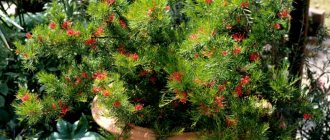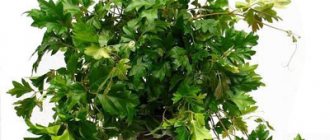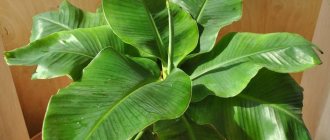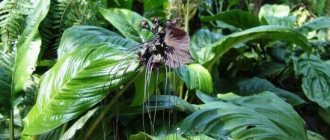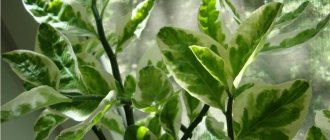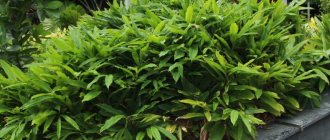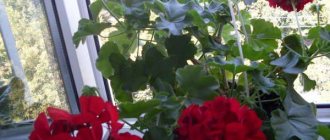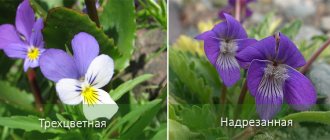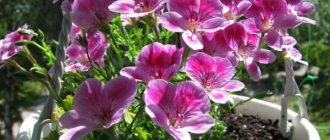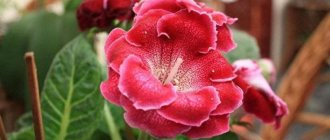Royal scepter mullein, which is easy to grow, has a large number of useful properties. In addition to the medicinal effect, the composition of verbascum in combination with salvia will become a real decoration of the flowerbed.
Following the rules regarding caring for mullein will allow you to grow healthy plants that will delight you with lush flowering all summer long.
Description and characteristics
Mullein is an amazing garden plant that delights with gorgeous flowering throughout the summer. Charming flowers located on tall peduncles do not last long, but the alternate opening of the buds promotes continuous flowering. The plant is popularly called as golden flower, archer, royal scepter, verbascum. Despite its simplicity, the flower will fit into any garden design.
Mullein belongs to the category of biennial plants, growing up to 200 cm in height. The outlines of the culture are similar to the scepter. Small yellow flowers, the diameter of which barely reaches 1.5 cm, are densely located on the upper parts of the stems. Alternate blooming of flowers begins from the middle region of the stems. You can admire the blooms throughout the summer.
Verbascum foliage is located horizontally above the ground surface. The leaf blades are quite wide. The two-year-old crop has a powerful root system.
Often, mullein can be found on the side of the road, in the yard, in fields and forest areas. People often use the plant for medicinal purposes.
"Royal Scepter": landing
All mullein are a godsend for flower growers who do not have enough time for painstaking care.
Soil and location
Thanks to its powerful taproot, mullein is not demanding on the composition and fertility of the soil. The best option would be sandy and sandy loam soils with a neutral or slightly acidic reaction. When planting seeds of the “Royal Scepter” there are only two restrictions:
- Viscous, heavy, clayey soils - the plant develops extremely poorly in them. If there is such land on the site, it is recommended to add more sand, peat, and fine gravel to it.
- 2. Fatty black soils - when grown in such areas, mullein fattens, due to which you will admire rapidly developing greenery, and not flowering. At the end of the season, in chernozem areas, goldenflower usually dies, since there is no incentive to reproduce, and therefore to flower.
Kinds
There are more than 240 varieties of mullein, but in our country you can find only 6-8 varieties of the plant. These species can adapt perfectly to our climate. Below are the types of verbascum found in our latitudes.
- Scepter-shaped (dense-flowered) mullein. The height of the decorative crop reaches 20-110 cm. Thick, erect stems are densely covered with leaf blades. The oval-shaped lower foliage reaches 15-35 cm in length. The upper leaf blades are much smaller. Their length does not exceed 10 cm. Long spike-shaped inflorescences are dotted with bunches of flowers, painted in a yellow palette. The inflorescences resemble a golden royal scepter. Each of the corollas reaches 5 cm in width. Fresh flowers have an amazing subtle aroma. Dried inflorescences have a pronounced honey smell.
- Common mullein (bear's ear). Any part of the culture is densely pubescent with long silvery fibers. The foliage is dark green. Leaf blades are concentrated along the entire length of the shoots. At the very top of the shoot there is a short inflorescence shaped like a spikelet. The length of the lower petiole foliage reaches 16-30 cm. The size of the green mass in the upper part of the stem is much smaller. From a distance, the foliage shrinking upward resembles the outline of a cone. A large number of small flowers form an inflorescence. The diameter of small flowers barely reaches 1.5-2 cm.
- Black mullein, whose height reaches 55-115 cm, is distinguished by erect stems. Large leaves are concentrated below in the third part of the shoot. The lower petiolate foliage is ovoid or heart-shaped. The length of the leaf plates reaches 20 cm. Long inflorescences are covered with bunches of small yellow flowers. Near the base of the petals, the presence of brown spots can be noted. Purple fibers decorate the columns of stamens.
- Medicinal mullein. Each of the stems, the height of which can exceed 120-140 cm, is densely covered with leaf blades. Long inflorescences located in the upper region of the stems branch into several shoots. Each part of the perennial is covered with thick felt fibers. The length of the oval leaves exceeds 15-20 cm. The flower petals are long and soft to the touch. Flowers are collected in groups along the entire length of the inflorescences. The anthers are painted in bright red tones.
- Hybrid mullein is a decorative species that breeders obtained through interspecific crossing. Large flowers are painted in various shades. The height of the shoots, depending on the variety, can reach 50-170 cm. Among the best hybrid species of verbascum, it is worth highlighting Mont Blanc, Pink Domino, Jackie and Herry Helen.
Folk recipes for treating mullein scepter-shaped
Infusion for cough treatment
Pour a tablespoon of dried or fresh flowers into a glass of cold water. Leave for an hour, strain. Take 2 tablespoons slightly warmed 4 times a day.
Cough syrup
Take 8 grams of flower corollas, 8 grams of marshmallow root and brew 250 ml of boiling water. Place on the stove and simmer over low heat for 20 minutes. Strain the broth through 2 layers of gauze and add a glass of sugar, put on the stove and boil until a thick syrup is obtained. Give children a teaspoon of syrup several times a day.
Tea against hemorrhoidal bleeding
Brew dried mullein flowers as tea and drink throughout the day. After 2-3 days of taking this tea, hemorrhoidal bleeding will stop.
Infusion for the treatment of laryngitis and inflammation of the respiratory tract
Pour a tablespoon of fresh or dried mullein flowers into a glass of hot boiled water. Keep in a water bath for 15 minutes, leave for 30 minutes, strain through two layers of gauze. Take the infusion 2 tablespoons 3 times a day.
Growing from seeds at home
The plant does not belong to the category of capricious ones. Abundant flowering throughout the summer is a definite advantage. The presence of a taproot system allows mullein to obtain moisture from the depths. The presence of pubescence on the leaf blades reduces moisture evaporation. The plant can grow both in a sunny area and in a shaded area.
When choosing a place for planting, it is worth considering that verbascum will not delight with lush flowering on loamy soil. In order to propagate a crop, you need to use seeds. Small seeds are sown in open ground at the end of spring, when the threat of night frosts has passed. The seeds are distributed over the bed and lightly sprinkled with a small layer of soil. After the emergence of seedlings, it is necessary to thin them out, leaving only strong and healthy specimens. The distance between plants should reach 20-25 cm.
Seedlings need abundant, systematic soil moisture. A year after planting, the plants will begin to bloom. When replanting a biennial tree, it is important not to separate the lump of soil from the root system, which will allow the plant to quickly adapt to the new location. The perennial reproduces well by self-sowing.
Note! From seed collected from one plant, descendants with different flower colors grow.
When watering, it is worth considering that verbascum does not like waterlogged soil. Therefore, water is added under the mullein gradually as it is absorbed into the soil. To extend the life of the biennial, cut the stems as soon as the flowers begin to dry out. There is no need to wait until the fruits begin to ripen. Frequent application of fertilizers to fertile soil shortens the lifespan of flowers.
Features of care
In order for the plant to bloom for a long time, it is necessary to follow the recommendations of experienced agronomists regarding the care of biennials. Below are the main features of care.
- Feeding. Before sowing verbascum seeds, it is necessary to add a small percentage of mineral fertilizer to the soil. After applying fertilizer, it is recommended to loosen the soil. For adult mullein, organic and mineral fertilizer is suitable as a top dressing. Fertilizing is applied to the root zone area.
- Weeding is a necessary item for caring for mullein. The medicinal plant needs systematic loosening of the soil. Weeds take away useful elements and soil and create additional shading, which negatively affects the development of young seedlings.
- Mulching will have a positive effect on the appearance of mullein. By sprinkling the soil with sawdust, you can get rid of weeds, saturate the soil with useful elements, and maintain soil moisture for a long time. Verbascum is fragrant in such conditions.
- Removal of flowers is carried out in stages as they wither. This process allows you to slow down the flowering process of the remaining buds and prevent the strength from being drawn out of the plant. After the crop has flowered, the stems are also cut, dried and used as mulch.
- Preparing mullein for winter. It is necessary to prepare plants for cold weather in October. The biennial root system is sprinkled with a layer of sawdust, peat, ash and fallen leaves. The bedding layer should reach 7-10 cm.
Reproduction
For the purpose of propagation, the seed method or the method of dividing the bush can be used. Seed material remains viable for a long time. The seeds can be sown immediately in open ground, as mullein is resistant to frost. In fields, biennials reproduce by self-sowing. The first shoots appear after 10 days. The first months the seedlings grow slowly. With proper care, the growth rate increases from 9-10 weeks.
To preserve varietal characteristics, it is necessary to use the method of dividing the bush. The process is performed in September, when flowering has come to an end. The plant along with the root is dug up and shaken off the earthen clod. The root is cut into 2-3 parts, so that buds remain on each of them. The length of each root should be within 5-6 cm. Each division is placed in separate holes. A small layer of sand is poured over the root with the bud. Only after this can the hole be filled with soil. The distance between the holes should not be less than 35 cm.
Diseases and pests
Mullein is most often harmed by aphids and fungal infections. In order to cope with the pest, you should use drugs of the following type:
- Aktars;
- Anti-mite Max;
- Decisa;
- Inta-Vira;
- Golden spark;
- Calypso Spray;
- Fitoverma;
- Tanreka;
- Tsvetoluxa.
It is very important to accurately follow the dosage of medications. As soon as signs of aphids are detected on the plant, treatment should begin as soon as possible.
Note! When spraying flowers, it is unacceptable to get the solution on edible plants growing nearby, since harvesting in this case will need to be postponed for a month.
If a fungal infection is detected on flowers, the plantings should be sprayed with Fitosporin-M or Topaz as soon as possible. Fungicidal agents will help quickly cope with the disease.
Medicinal properties of the plant
Mullein has medicinal properties, so it is used quite often during therapy:
- skin pathologies;
- gastrointestinal infections;
- hemorrhoids;
- pathologies of the oral cavity;
- asthma and sore throats;
- cardiovascular diseases.
The royal scepter affects the human body as an effective sedative, expectorant, and diuretic. Very often, pharmaceutical companies include the plant in their preparations.
In folk medicine, tinctures, decoctions, oils and ointments made on the basis of verbascum are actively used. It is worth considering that during the preparation of decoctions and infusions, the stamens of the plant are first removed, which avoids irritation of the skin and mucous membrane.
Contraindications
Despite the beneficial properties of the plant, it should be used very carefully by women carrying a child. During lactation, mullein should not be used.
There are cases when the royal scepter provokes the development of an allergic reaction. Therefore, before starting use, it is important to test the composition in a small amount on the skin. If there are no unpleasant sensations or redness after 100-120 minutes, you can safely use the folk remedy.
Application in landscape design
Blooming spikelets of an ornamental crop attract the attention of even the most experienced gardener. Landscape designers use mullein for planting in small groups on the lawn. Verbascum is also actively used in decorating flower beds where bulbous perennials are planted. Mullein goes perfectly with salvia, anafalis, stachys, catnip, and orchis.
Luchinnik is an effective medicinal plant that not only benefits the human body, but also decorates the design of the local area. An unpretentious culture that can become a decoration for any flower bed.
Watch a video about these beautiful flowers:
Instructions for growing the flower Mullein Royal Scepter
Yellow mullein
Mullein Royal scepter
Pink and white mullein
Royal scepter mullein, which is easy to grow, has a large number of useful properties.
In addition to the medicinal effect, the composition of verbascum in combination with salvia will become a real decoration of the flowerbed. Following the rules regarding the care of mullein will allow you to grow healthy plants that will delight you with lush flowering all summer.
